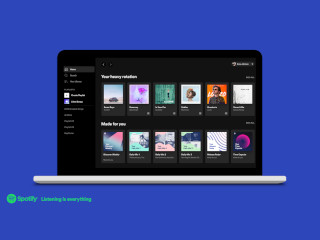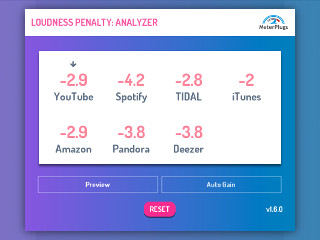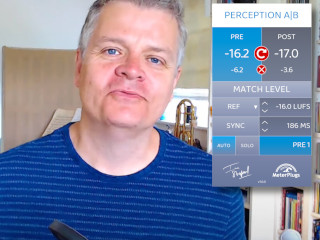Peak meters suck, plain and simple. Do yourself a favour and stop using them. They don’t correlate well with perceived loudness and most don’t even detect peak levels reliably! Loudness meters and true-peak meters solve these problems…
Loudness meters based on ITU BS.1770-4 give a better indication of how we perceive loudness, smoothing out brief peaks and valleys in a signal, just like our auditory system. They also take into account our perception of different frequencies. For example, our ears are most sensitive to frequencies in the 2 - 5 kHz range, so loudness meters weight them higher.
Benefits of Loudness Meters
First, by using a loudness meter, you will begin to form a mental link between the meter’s levels and the real-world loudness that you hear. Over time, the meter will reinforce what you hear and vice versa. This will help you develop consistency between your projects. The same cannot be said for a peak meter, since its levels don’t correlate with how you perceive loudness.
Second, streaming platforms like iTunes, Spotify and Youtube “normalize” the loudness levels of different songs so that they all play back at the same level. This creates a more consistent and enjoyable listening experience. It also means that it’s pointless to try to maximize your levels, because your music will simply be turned down.
Don’t have a loudness meter? That’s OK! If your DAW doesn’t include a loudness meter, there are many plugins available. Alternatively, you can use your DAW’s RMS meter, which is similar to a loudness meter, and should suffice unless you need to meet specific loudness specifications.
How are True-Peak Meters Different?
True-peak meters are like peak meters, but they over-sample your music before detecting peaks. The problem with traditional peak meters is that peaks can happen very quickly, and the meter simply misses them. For example, most digital peak meters look at each incoming sample, to see if it is above 0 dBFS. The problem with this approach is that when the digital samples are converted to a continuous analog signal, peaks may occur between samples. These are called inter-sample peaks. Since a true-peak meter over-samples the signal, the probability of missing a peak goes way down.
Should You Ignore Peak Levels?
No, they let you know when you’re clipping and you can compare them to your loudness levels to get a sense of how dynamic your music is. Just be sure you’re using a reliable peak meter (a true-peak meter). And don’t focus on maximizing your peak levels. Instead, focus on targeting sensible loudness levels and achieving healthy dynamics. More on those topics in a future post…






